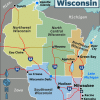Source: Fortune —
In the early ’80s, homebuilders mailed two-by-fours to then Fed Chair Paul Volcker in hope the central bank would relax its inflation fight that saw mortgage rates top 18%. Of course, the Fed didn’t back off until the 1981 recession helped tame the inflationary spike that began a decade earlier.
Historically speaking, the Federal Reserve’s inflation fighting playbook always starts with housing. It goes like this. The central bank begins by applying upward pressure on mortgage rates. Not long afterwards, home sales sink and existing home inventory spikes. Then homebuilders begin to cut back. That causes demand for both commodities (like lumber and steel) and durable goods (like windows and refrigerators) to fall. Those economic contractions then quickly spread throughout the rest of the economy and, in theory, help to rein in runaway inflation.















